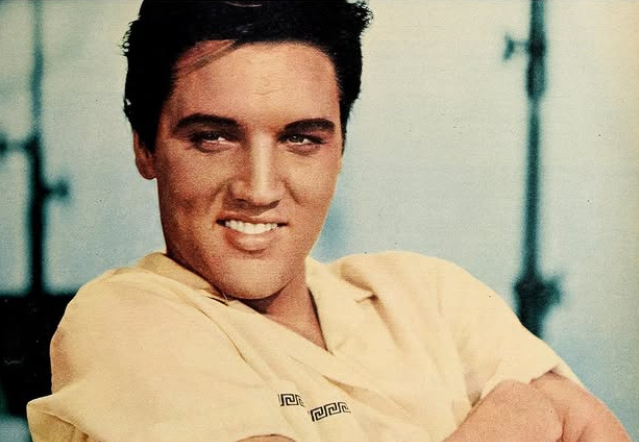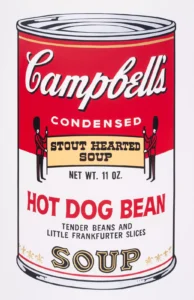It is difficult to imagine the history of rock ‘n’ roll without Elvis Presley. Known worldwide as the “King of Rock ‘n’ Roll,” Elvis brought energy, charisma, and a unique musical blend of country, rhythm and blues, and gospel to mainstream audiences. Over his two-decade career, he influenced countless artists and amassed a discography of hits that repeatedly topped the charts and shaped American popular culture. When asked, “What was Elvis Presley’s most successful song?” opinions and statistics can vary, since many of his singles rose to number one and held strong for multiple weeks. However, a strong case can be made that the double-sided hit record of “Hound Dog” and “Don’t Be Cruel” stands as Elvis’s most commercially impressionable release—and possibly the most successful in chart terms.
According to the Elvis History website, these two songs “spent a combined 55 weeks in the Top 100 in 1956-1957. No other artist in the rock era, not even The Beatles, had a double-sided hit that could challenge the cumulative chart performance of ‘Hound Dog’ and ‘Don’t Be Cruel.’” This impressive statistic suggests that these two titles together helped define the earliest wave of rock ‘n’ roll mania, cementing Elvis’s place as a cultural icon. Below is a closer look at “Hound Dog,” “Don’t Be Cruel,” and several other monumental hits that illustrate Elvis’s enduring appeal and legendary status.
The Double-Sided Phenomenon: “Hound Dog” and “Don’t Be Cruel”
When RCA released “Hound Dog” backed with “Don’t Be Cruel” in July 1956, it was an extraordinary moment in pop music history. Both sides of the single claimed massive sales and airplay, something rare even during an era in which double-sided hits were more common than they are now. Usually, labels selected an “A-side” to promote, while the “B-side” was considered secondary. In Elvis’s case, however, both sides turned into mega-hits:
“Hound Dog”
•Originally written by Jerry Leiber and Mike Stoller, “Hound Dog” was first recorded by Big Mama Thornton in 1952 as a raw, blues-tinged track. Elvis’s version—louder, faster, and more dramatic—epitomized the rebellious spirit of early rock ‘n’ roll. In his live performances, Elvis’s swiveling hips and raucous vocals sparked nationwide controversy for being too “suggestive,” drawing both fans and critics in droves.
•The track skyrocketed to the top of the charts, and by blending blues influences with a more polished rock ‘n’ roll arrangement, Elvis opened the door for countless other artists to experiment with new sounds.
“Don’t Be Cruel”
•Written by Otis Blackwell, “Don’t Be Cruel” offered a different style—still infused with rock sensibilities but leaning more toward pop. The song showcased Elvis’s vocal nuances and ability to straddle multiple genres.
•Where “Hound Dog” was brash and explosive, “Don’t Be Cruel” balanced the single with its smoother melody and catchy, sing-along chorus. It quickly climbed the charts and stayed at or near the top for weeks.
Together, “Hound Dog” and “Don’t Be Cruel” ruled the airwaves, spending 55 cumulative weeks on the charts. This feat has overshadowed even some of the biggest double-sided hits produced by later rock giants, including The Beatles. The achievement stands as a milestone in music history and underscores Elvis’s extraordinary impact in the mid-1950s.
Setting the Stage: Elvis’s Rapid Rise
Before “Hound Dog”/“Don’t Be Cruel,” Elvis had already made waves with “Heartbreak Hotel,” released earlier in 1956. That track introduced mainstream listeners to the moody, bluesy side of rock ‘n’ roll, leading many to dub Elvis as the new face (and hips) of popular music. “Heartbreak Hotel” hit number one, sold millions of copies, and served as an undeniable proof of Elvis’s magnetism.
The mid-1950s music scene was ripe for a shift. Post-war America was experiencing cultural changes—television was entering its golden age, teenagers were being recognized as a distinct cultural demographic, and a new generation wanted music that spoke to youthful energy and rebellion. Elvis provided that soundtrack. By the time “Hound Dog”/“Don’t Be Cruel” arrived, Elvis was already a star on the rise, appearing on national television shows like The Milton Berle Show and The Ed Sullivan Show, which helped catapult him further into the national consciousness.
Other Hit Contenders: From “Love Me Tender” to “Suspicious Minds”
Elvis was hardly a one-hit wonder, however. Between the late 1950s and the 1970s, he recorded numerous hits, many of which remain timeless classics. While “Hound Dog”/“Don’t Be Cruel” may stand out in terms of multi-week chart power, other songs vie for the crown of “most iconic” or “most culturally significant.” Here are a few standouts:
“Love Me Tender” (1956)
•Released in the same explosive year as “Hound Dog”/“Don’t Be Cruel,” “Love Me Tender” took Elvis into romantic ballad territory. Its gentle melody and heartfelt lyrics contrasted sharply with the raw energy of “Hound Dog,” showcasing his versatility as a singer.
•Tied to the Elvis film of the same name, it became one of his signature love songs. Some fans argue that “Love Me Tender” remains one of his most enduring ballads.
“Jailhouse Rock” (1957)
•Another Leiber and Stoller composition, “Jailhouse Rock” became the title track of one of Elvis’s most famous movies. It features a pounding groove, spirited lyrics, and an unforgettable dance sequence that is often cited as an iconic moment in rock ‘n’ roll film history.
•It reached number one on the charts and, for many, solidified Elvis’s dominance in both music and cinema.
“It’s Now or Never” (1960)
•Inspired by the Italian standard “O Sole Mio,” “It’s Now or Never” proves Elvis’s ability to incorporate European musical influences into a pop format. Upon its release, it quickly climbed to number one, selling millions of copies worldwide.
•The song served as a transition from Elvis’s earlier rockabilly and rock ‘n’ roll sound to a broader, more mature style. It was also one of the first major releases after his return from military service.
“Are You Lonesome Tonight?” (1960)
•This gentle ballad topped the charts and remains a staple of Elvis’s discography. Known for its spoken-word bridge, the track reveals a vulnerability and theatrical flair that made it a showstopper.
•It was especially popular in Elvis’s live performances, where fans would swoon at his emotive delivery.
“Can’t Help Falling in Love” (1961)
•Featured in the film Blue Hawaii, this romantic waltz-time ballad became a staple in Elvis’s setlists, often closing his concerts. Even decades after Elvis’s passing, the track is covered by contemporary artists, highlighting its timeless appeal.
“Suspicious Minds” (1969)
•After a few years of focusing on movies over music and enduring a slight decline in chart performance, Elvis made a triumphant comeback with “Suspicious Minds.” Released during the late 1960s, it reached number one on the Billboard Hot 100.
•Produced by Chips Moman and recorded in Memphis, the song reflected a new, mature style that combined classic Elvis vocals with contemporary pop-rock elements. This revitalized his career and remains a fan favorite.
Why “Hound Dog” and “Don’t Be Cruel” Reign Supreme
Even with all these hits, the statistical dominance and cultural footprint of the “Hound Dog”/“Don’t Be Cruel” combination remain unmatched. Several factors contributed to their sustained success on the charts:
Unprecedented Airplay: Radio stations frequently played both tracks, effectively giving Elvis a two-for-one promotional advantage. This level of exposure helped keep the single on the charts long after the typical shelf life for a pop record.
Television Appearances: In the 1950s, the intersection of television and rock ‘n’ roll was new and captivating. Elvis’s iconic performances, in which he sang both tunes with his trademark moves, spurred public curiosity and continuous demand.
Musical Versatility: By pairing a ferocious rock tune (“Hound Dog”) with a more melodic crossover track (“Don’t Be Cruel”), RCA offered radio DJs songs that appealed to different audience segments—those who wanted to hear the rebellious edge of rock as well as those who preferred a polished pop sound.
Youth Culture Moment: 1956 is widely regarded as a watershed year in pop music. Teenagers were tuning in, and Elvis stood as their idol, the figure who spoke most directly to their sense of excitement and social freedom.
Controversy and Publicity: Elvis’s flashy performances drew criticisms from some conservative corners but also aroused intense curiosity and media coverage. The stir around his on-stage persona ignited record sales, turning each new single into a cultural event.
How the Charts Define “Success”
“Success” can be measured in multiple ways. Sometimes it’s about how long a single stayed at number one; other times, it’s about total sales, cultural influence, or longevity on various charts. In some record-keeping systems, “Hound Dog” and “Don’t Be Cruel” could be recorded separately, each with its own rankings. In others, the record was considered a single entity with dual hits, making its chart run particularly impressive. Modern analytics—such as digital downloads and streaming—did not exist in the 1950s, but by the standards of the time, a combined 55 weeks in the Top 100 was unparalleled.
Critics or fans might argue for another Elvis track as the “most successful” based on different metrics or on the notion that a particular single had a deeper influence on rock music as a whole. Yet the historical consensus—especially when looking at the statistics cited by sources like Elvis History—is that the double-sided phenomenon of “Hound Dog” and “Don’t Be Cruel” carved out a unique place that outshone even The Beatles in terms of combined chart duration.
Legacy of the King’s Biggest Hits
While it is fascinating to comb through charts, weeks spent at number one, and total units sold, it’s equally significant to appreciate how these songs continue to resonate today. Elvis’s biggest hits—“Hound Dog,” “Don’t Be Cruel,” and others—remain part of the global cultural soundtrack. His influence is evident in every corner of popular music, from rock to pop, country to R&B. Artists across generations, from The Beatles and The Rolling Stones to Bruno Mars and Lady Gaga, have cited Elvis as an inspiration.
In some ways, the debate about which Elvis song is “the most successful” never truly ends, because fans will cite different reasons for choosing favorites: a nostalgic connection, a legendary performance, or a chart milestone. Nevertheless, we can confidently say that the single that paired “Hound Dog” and “Don’t Be Cruel” redefined what a “hit record” could achieve in the early days of rock ‘n’ roll. More than just popular tunes, they served as cultural lightning rods, fueling Elvis’s meteoric rise and altering the course of popular music forever.
Impression
Elvis Presley recorded dozens of massive hits, each adding a new dimension to his status as the King of Rock ‘n’ Roll. The iconic year of 1956 saw him dominate both the charts and the nation’s television screens, galvanizing American music. While “Heartbreak Hotel,” “Jailhouse Rock,” “Love Me Tender,” and numerous other classics remain beloved, the extraordinary chart success of “Hound Dog” and “Don’t Be Cruel” stands out as a crowning achievement in a career overflowing with milestones. Spending a combined 55 weeks in the Top 100—and eclipsing even the feats of The Beatles in terms of a single double-sided release—these tunes together deserve the title of Elvis’s most successful single. They reflect the transformative power of the early rock era, the unbridled charisma of Elvis himself, and a moment in music history that continues to echo in the present day.
No comments yet.







